Review: BlackBerry Key2 LE
Nov 26, 2018, 7:00 AM by Eric M. Zeman
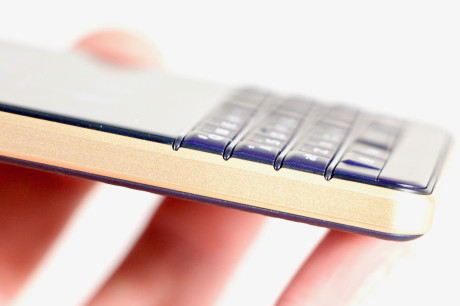
The Key2 LE shares the same basic size, shape, and appearance of the pricier Key2, but downshifts materials and components to make it less costly. If you're a keyboard die-hard, the Key2 LE is an intriguing and affordable option thanks to the solid Android platform and productivity-boosting software from BlackBerry. Here is Phone Scoop's in-depth review.
Hardware
Is It Your Type?
If the $650 BlackBerry Key2 was too much smartphone for you, TCL has dialed things back a bit with the Key2 LE. This "lite" version of the signature BlackBerry is defined by its keyboard, pleasing color palette, and much lower price. If you're in the market for a device with real, physical keys, the Key2 LE is one of the least expensive options.
Body
The Key2 LE has the Key2's good looks and features, but scales down the materials and specs to lower the price of the phone. All the major bases are still covered in terms of features and functionality, in a device that some may find more appealing.
The Key2 LE brightens things up a bit. Where the Key2 comes in black and silver — what some might call conservative shades — the Key2 LE ships in actual colors. There's a blue-on-blue model, a blue-on-champagne model. (The red-on-blue model we saw at launch is not going to be sold in the U.S. right away.) I like that the LE, which may find its way into the hands of younger users, has more appealing palette options.
The LE has a polycarbonate frame that wraps around the outer edges. TCL applied a metal finish to the polycarbonate and chamfered the frame's edges. It's a respectable effect. The LE is every bit as blocky as the Key2. The rear panel is made of a soft-touch material that comes across as rubber-y (it's not rubber). The texture provides it with grippy staying power. On front, the keys on our Champagne review unit are made of a dark blue plastic that matches the color of the backside.
The phone is tall, narrow, and reasonably thin. The LE is definitely smaller than big flagships like the Pixel 3 XL or iPhone Xs Max. I particularly appreciate the LE's narrow waist, which makes the phone easier to hold and use. You can't reach the top of the display with your thumb, but keyboard shortcuts make up for that. The plastic materials and smaller battery mean the LE is significantly lighter than the Key2. This is a positive for the phone. The LE is still large enough that it won't fit into every pocket, but it worked with most of my jeans just fine.
The materials and build quality are very good for this price point. The glass on front is excellent and fitted into the polycarbonate frame precisely. The keyboard is firm and tight. There are no loose or wiggly keys. The texture on the rear has tiny circular dots that remind me of a ping pong paddle. TCL did a fine job shaping and installing the rear panel. The plastic build feels sufficiently tough and TCL says it's actually more robust than the metal-clad Key2.
I'm bummed that the LE is not water-proof.
The screen size and shape are a direct carry-over from the Key2. I like the 2.5D curved glass, which bends very slightly along the edges. I wish the bezels were slimmer, but TCL kept the capacitive back, home, and multitasking keys above the keyboard and under the display.
The LE's QWERTY keyboard is a bit shorter than that of the Key2. We're talking a few millimeters here. This difference means the keys themselves are smaller. Further, the profile of the LE's keys is flatter when compared to the Key2. Though the action remains very good, I think there's a significant difference between the feel of two keyboards. The Key2 provides more confident feedback as you type and the keys are easier to find without looking. On the LE, I was more apt to press the wrong key. The keyboard has frets (thin bars) between the rows.
Keyboard
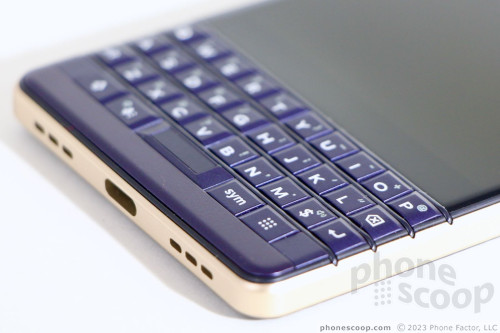
Sadly, the LE loses the capacitive functionality of the Key2's keyboard. This is a cost-saver.
The fingerprint reader is embedded in the space button. The Speed Key, a dedicated button in the bottom right corner, can be used to trigger user-defined shortcuts. This is an effective tool for launching your favorite apps/actions.
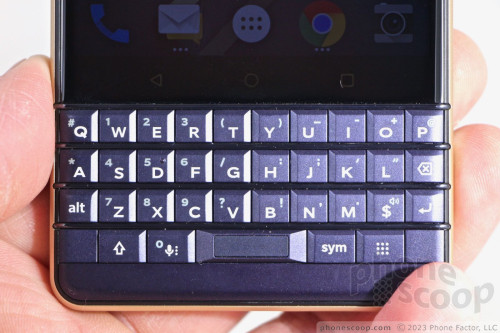
You'll find three physical buttons on the right edge: the volume toggle, the screen lock button, and the customizable action key. I like the profile of the screen lock key, which is ridged to help set it apart from the others. All three are a bit flat, however, and feedback is just okay. The action key opens Google Assistant, Google Lens, or voice search by default.
Side Keys
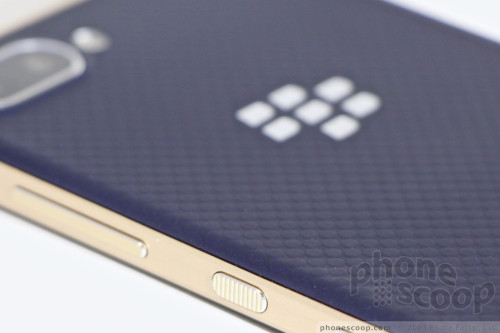
The USB-C port is on the bottom, along with slotted speaker holes. A 3.5mm headphone jack is on top. The combined SIM / memory card tray is on the left edge. It can accommodate either two SIMs at the same time, or one SIM and one microSD memory card.
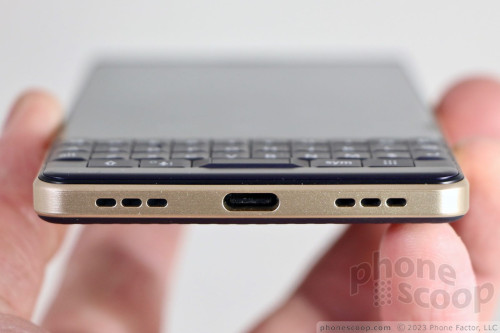
The polycarbonate material that forms the rear panel is curved just a bit where it meets the side edges. You cannot remove the rear panel, nor the battery underneath. The dual camera module is raised a bit.
I like the Key2 LE hardware overall, though there are a few weak points. If the Key2 is too costly for you, the Key2 LE is a viable option for the QWERTY-craving kind.
Screen
While many of today's top phones may be all about the display, the Key2 LE is not. TCL crammed a 4.5-inch full HD display into the face of the phone and it feels hemmed in. (My guess is TCL could squeeze a 5-inch screen onto the LE's face if it tried.) The display is the same that's used on the Key2. It make use of an unusual 3:2 aspect ratio with 1,080 by 1,610 pixels.
With a pixel density of 433ppi, the resolution is more than adequate for your emails, messages, and documents. I do wish TCL would do something to improve the tone of the screen, which feels muted and leans blue. Brightness could be much better. While I had no trouble using the Key2 LE indoors, the screen is easily washed out under a shining sun. This had me ducking for shade. Viewing angles are mediocre.
TCL's software allows you to tweak the color profile, set night/reading mode, control system font/icon sizes, and more.
Signal
As long as you're an AT&T or T-Mobile customer, you'll be in good shape with the Key2 LE. The phone covers the basic LTE bands for both, and includes Band 29 for AT&T and Band 66 for T-Mobile. These bands will help boost performance in crowded environments. There's no CDMA, so the phone is a no-go for Sprint.
I put the Key2 LE to the test on AT&T's network around New York and it did very well for an unlocked device. Calls connected on the first dial without fail and it didn't drop any calls. The phone has a Cat 13 LTE radio and data speeds were quite good. The LE compares well to phones sold by AT&T. It managed to stream music and video over the network with few hiccups. It should be fast enough for most buyers.
Sound
TCL has put together a fine phone for phoning friends and family. The LE pushes clean, focused voices to your ear with plenty of volume. I didn't hear any bothersome distortion during the calls I made. The LE's earpiece has enough power to ensure calls are audible at home, in the office, and outdoors. Those I spoke to via the LE said I came across as loud.
The speakerphone isn't quite as good, but it's almost there. The volume is acceptable in most places, including a moving car, though it might get lost outdoors in noisy spaces. You might hear some distortion from time to time.
Ringers and alerts are loud enough to get your attention just about anywhere. The vibrate alert is just okay.
Battery
The LE's battery life falls short of the excellent performance of the Key2, but it still does well compared to other phones in this price range. The 3,000mAh battery will run a full day plus a good bit more. Not once did the phone die off in a single day, and in fact most of the time it still had a healthy margin left over come bedtime.
Even so, BlackBerry gave the phone a crazy-powerful tool for managing battery life called the Power Center. This advanced power management software gives you full control over every app on the phone. You can control how much memory apps use, stop apps from opening, as well as use toggles to automatically turn the screen down to a preset brightness, change location modes, cancel the live wallpaper, use adaptive brightness, and so on. Power Center gives power users the power they need to control the power.
The Key2 LE doesn't support wireless charging, but it will charge rapidly with the included charger thanks to QuickCharge 3.0.
Bluetooth, GPS, NFC, WiFi
You'll find all the secondary radios you might need on the Key2 LE.
The phone features Bluetooth 5.0 LE for your headphones, speakers, wearables, and car. I didn't run into any glitches pairing with a variety of accessories. Calls made via my car's hands-free system were just okay. Thankfully music sounded really lively through headphones.
Putting the GPS through its paces revealed no weaknesses. The Key2 LE found me in a blink each and every time and did a commendable job helping me get from here to there.
The Key2 LE's WiFi ran smoothly.
Last, but not least, the phone includes an FM radio. As long as you have wired headphones plugged in, you can dial in your local favorite station via the included radio app.
Software
Lock Screen
BlackBerry's ambient display is tame compared to other devices. The screen briefly flickers on when new emails, messages, or BBMs arrive. You can double tap the display to turn it on if you missed the alert. You can opt for the simple LED light if you prefer.
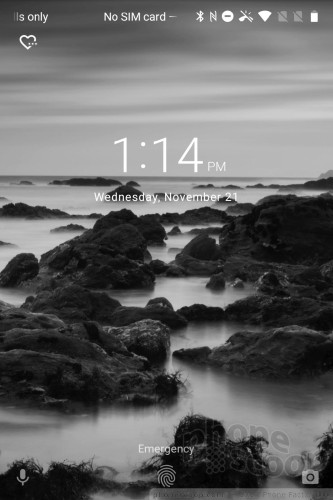
Pressing the lock button wakes the display and reveals notifications, as well as the clock and your wallpaper. The clock is fairly big, but can be hard to see outside. I appreciate that you can open the Quick Settings shade without unlocking the phone. The camera and Google Assistant are available thanks to shortcuts in the bottom corners.
The fingerprint reader is located in the space bar of the keyboard. It's painless to set up. I found it to be quick and reliable. You can lock files and folders with a fingerprint if you wish.
Android Smart Lock face ID is buried in the security menu. It's easily fooled and I don't recommend it. BlackBerry's picture password is available, too, but this feature is grating. It's easy to set up, but takes far longer to use than the fingerprint reader.
Home Screens
The Key 2 LE ships with BlackBerry's "hardened" version of Android 8.1 Oreo. It mostly looks like standard Google fare, but BlackBerry customizations are visible here and there.
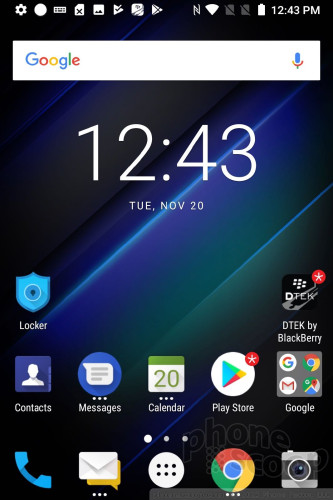
The home screen panels, app drawer, Quick Settings panel, and full system settings menus are completely standard Android and will be instantly familiar to any Android user.
The Productivity Tab from BlackBerry is similar to the Edge Screen feature on some Samsungs. The Tab is lined up along the left or right edge of the screen, and is accessible within most apps. Tapping the Tab opens a productivity dashboard that includes a quick look at your calendar, messages, tasks, and contacts. You can turn it off if you don't like it.
Productivity Tab
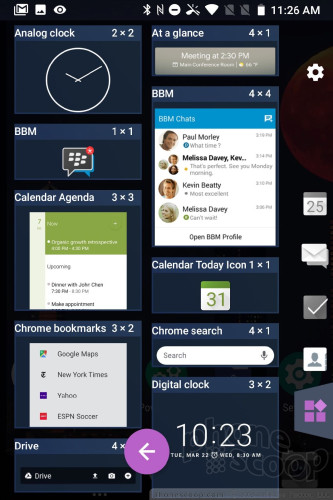
You can program the "convenience key" on the right edge to perform custom actions, such as open a specific app, speed dial a contact, or send a message. It's easy to use.
The Key2 LE includes BlackBerry's age-old keyboard shortcuts, but power users will want to tackle the Speed Key, which lets you create and assign actions that are available from any app. Basically, you tap the Speed Key followed by any other key to perform a custom action, such as Speed > E to compose a new email. It's pretty powerful.
BlackBerry has its own "recent apps" design. Tap the multitasking key and the Key2 LE will shrink all the open apps so you can see all of them at once. It takes getting used to and can be a bit of a jumble if you have too many open apps.
The Key2 LE downgrades the processor to the Snapdragon 636 with 4 GB of RAM under the hood. I expected to run into performance issues, but I didn't. The phone always felt speedy.
BlackBerry Apps
The Key2 LE wouldn't be a BlackBerry without BlackBerry's security and productivity tools. This chiefly includes DTEK, BlackBerry Privacy Shade, BlackBerry Hub, and BlackBerry BBM
DTEK oversees the phone's security settings and alerts you to any potential weaknesses. As long as you use a PIN, password, or fingerprint to secure the phone, it tells you you're in good shape.
A special app called BlackBerry Locker is on board and you can use it to secure your files.
BlackBerry Privacy Shade is a screen feature that makes it harder for people to read the screen from an angle. Basically, Privacy Shade darkens the entire screen except for a small window that you control. You can drag the window around the screen to see what's behind the shade. I like that you can control the transparency of the shade, as well as the size of the window opening.
BlackBerry Hub acts as a unified inbox for all communications, including call log, text, BBM, email, as well as Facebook, Instagram, Twitter, and others. Hub makes it easy to control notifications for individual accounts, as well as quickly jump between unread, flagged, muted, and high-importance conversations. Hub supports custom alerts, lets you prioritize emails, and tweak email appearances. It's a powerful tool that takes time to fine tune.
BBM offers a feature-rich messaging experience with tools such as read receipts, stickers, emoji, and voice/video calls. It's a great messaging service, though consumer-grade apps such as WhatsApp, iMessage, and Facebook Messenger have essentially supplanted it at this point.
Camera
The camera takes just a hair too long to open for my tastes.
To the left of the viewfinder you'll find controls for the flash and HDR — both of which have “auto” settings — as well as timer and aspect ratio. You need to opt for the 4:3 aspect ratio to get the full pixel count of the phone. (The 1:1, 3:2 and 16:9 settings crop the image.) From the main screen you can also switch shooting modes (camera, panorama, portrait, scanner, slow-motion, and video) and apply filters.
The scanner app lets you create usable documents from image scans. It can be set to recognize one language at a time. It does a great job with business cards, but is hit or miss with a full sheet of paper.
The bokeh/portrait mode, now a staple on most devices, creates photos with a blurred background. The software does a good job explaining how the feature works. It's a little slow.
Shooting Modes
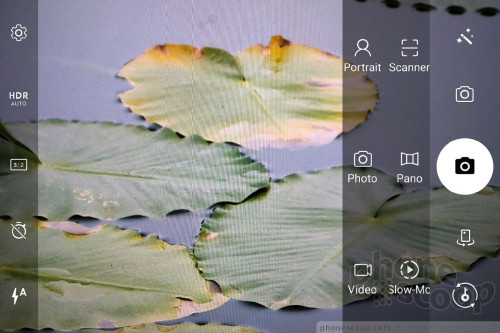
The Key2 LE's (Snapdragon 636) processor strains a bit with the camera app. It's not horribly slow, but it could certainly be faster.
Photos/Video
The phone has two sensors on the back, which is what helps it take those portraits. The main 13-megapixel sensor has a disappointing aperture of f/2.2.
BlackBerry can't seem to nail the camera system. The Key2 LE produces average photos at best. Pictures were generally in focus with proper exposure and tone, but they still looked flat. I saw plenty of noise/grain in low-light shots and the camera's HDR tool never found a happy medium. When you're outside under bright skies, photos clean up nicely. If you're shooting indoors, be prepared for dark, noisy results.
The selfie camera takes 8-megapixel images and does an okay job. Like the main camera, the selfie cam suffers in low-light conditions. You can use the LCD-based flash to make up for it a bit. The self-beautification tools can produce scary results if you go overboard.
The Key2 LE shoots video at a max resolution of 4K at 30fps. I was generally pleased with the results, which showed good focus, color, and better exposure than the camera. The Key2 LE produces usable video for sharing via YouTube.
If you're buying a phone at this price point, you shouldn't expect the best pictures in the world, and the Key2 LE won't give them to you. I'd use dedicated equipment for anything other than casual shapshots.
Wrap-Up
The Key2 LE is a clear step down from the Key2, and TCL/BlackBerry designed it that way. The company made purposeful choices to reduce the phone's cost, and in that pursuit they were successful.
The plastic build is sturdy enough, the display is decent, and the color schemes are pleasing. Given the utter lack of QWERTY phones in the market, I can't be too hard on the keyboard. It suffices, but isn't as good as the pricer Key2. Thank goodness for the wide range of customizable keyboard shortcuts.
Voice and data quality are fine, some will appreciate the Key2 LE's support for two SIM cards, and battery life exceeded expectations. I wish the phone were watertight.
BlackBerry's software is as good as that of any other phone maker. The Android home screens work well and BlackBerry's enterprise-grade security and productivity apps make the Key2 LE a good work device.
The camera needs to be better. Other phones at this price point trounce it completely.
The Key2 LE costs $429. This phone is for people who want a physical keyboard, some extra work tools, and BlackBerry's software. If you consume lots of media (particularly video), go with a normal, slate-style device. I like the Key2 LE's character, but it's strictly for keyboard die-hards.
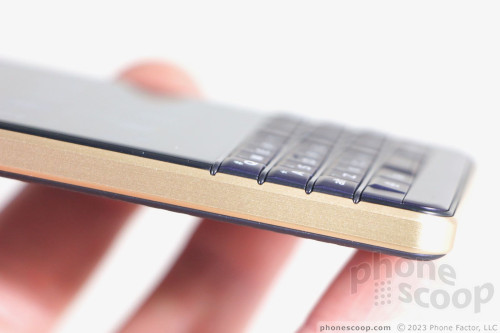
Comments
No messages


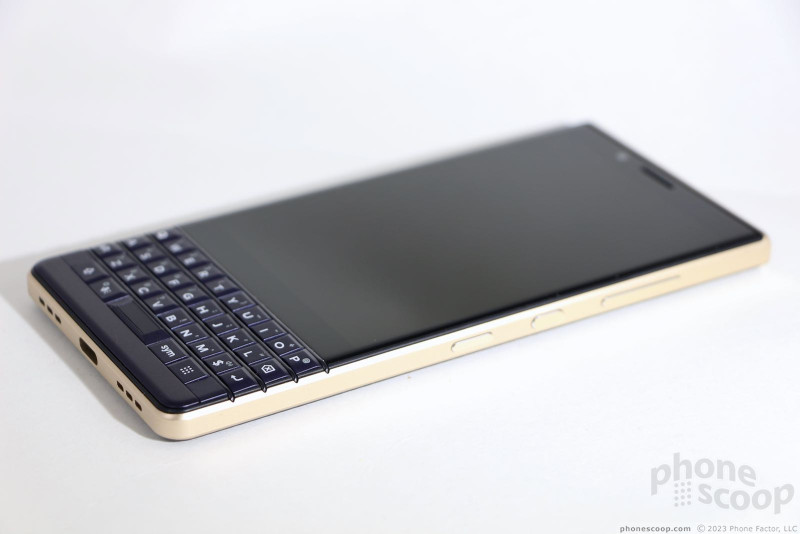









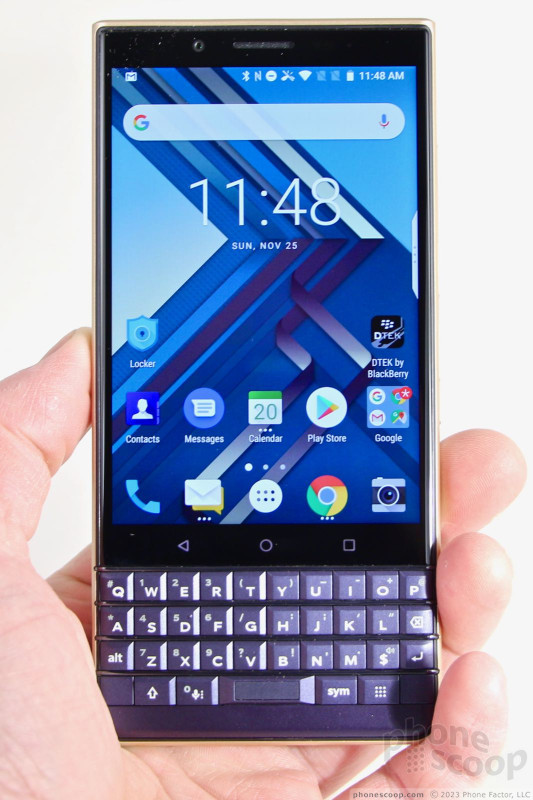












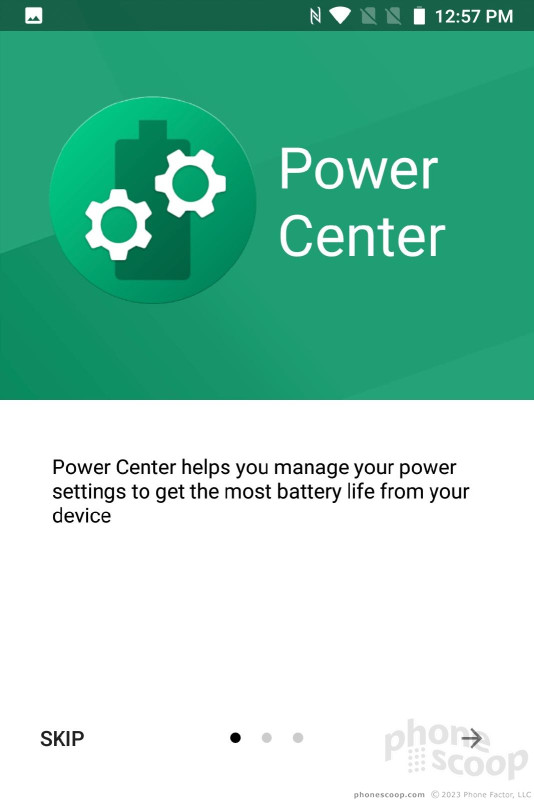














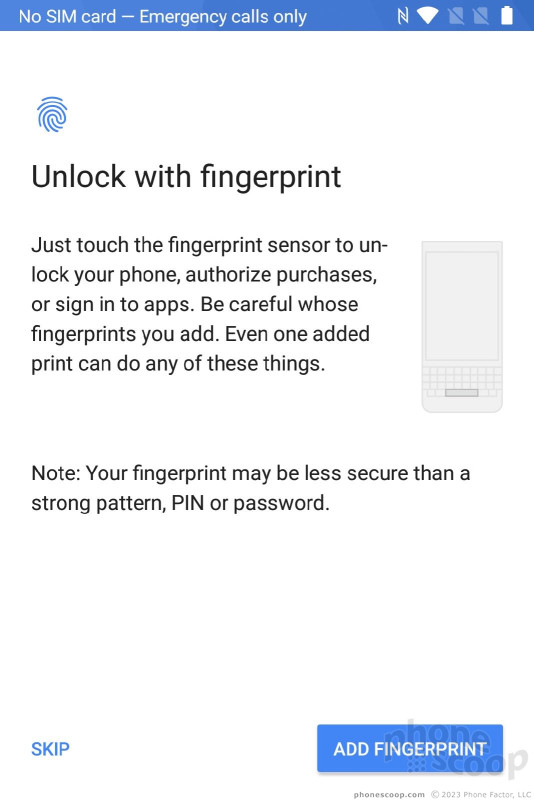






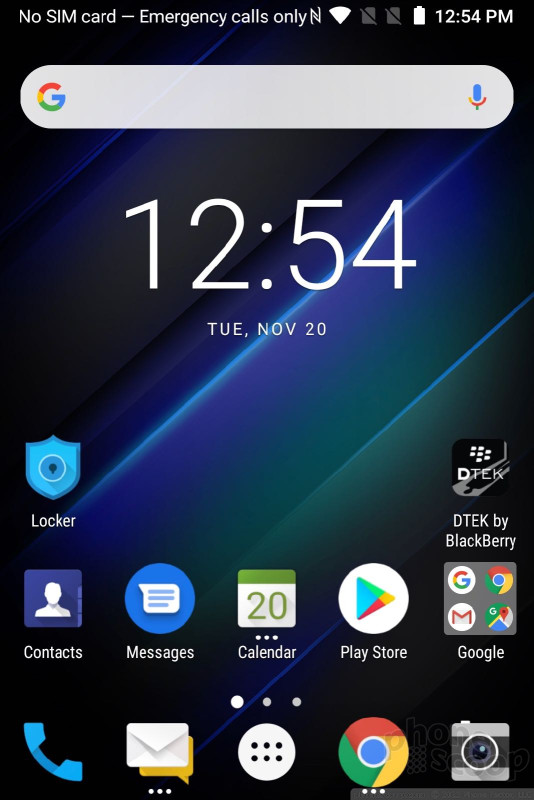







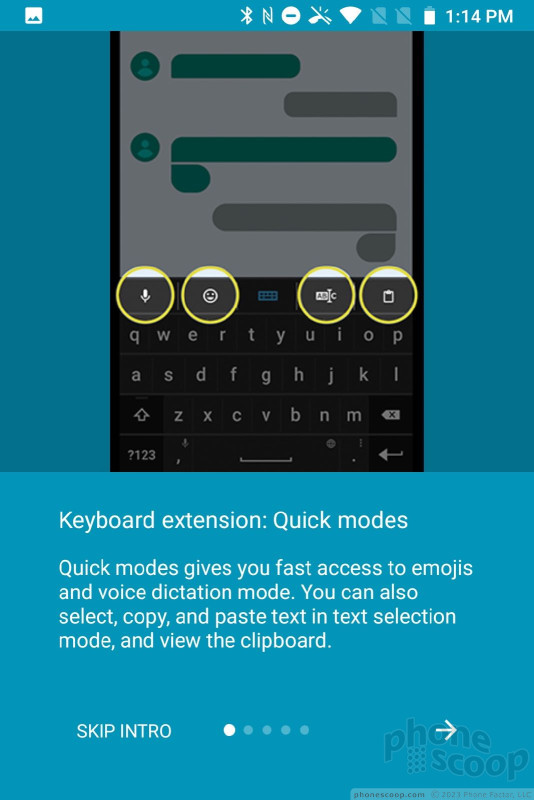





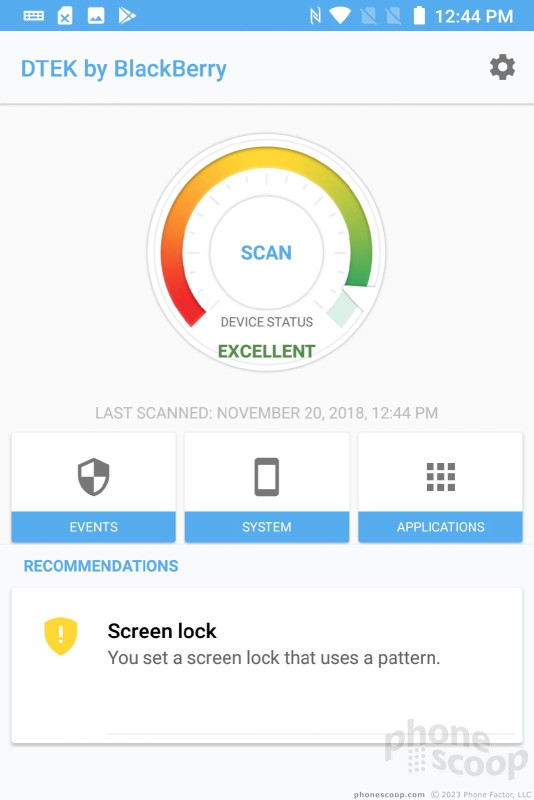











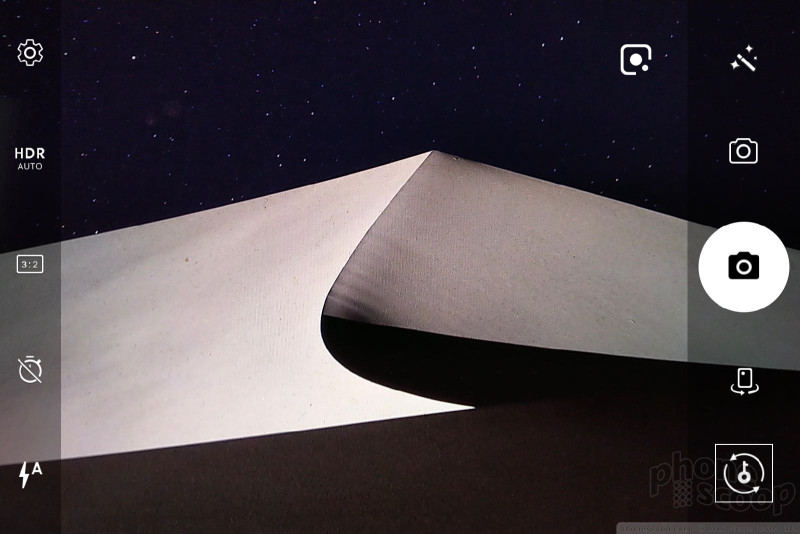






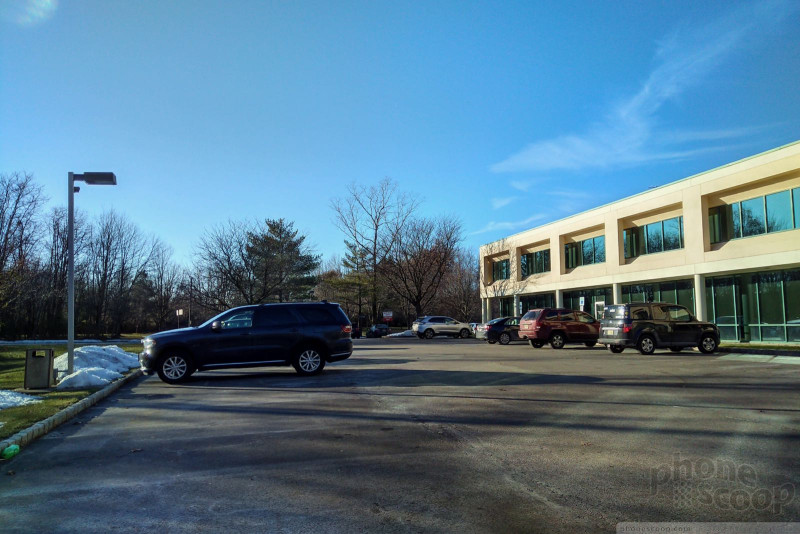













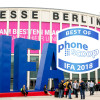 Best of IFA 2018
Best of IFA 2018
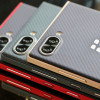 Hands On with the BlackBerry KEY2 LE
Hands On with the BlackBerry KEY2 LE
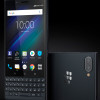 BlackBerry Key2 LE Coming to Verizon
BlackBerry Key2 LE Coming to Verizon
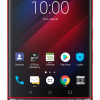 BlackBerry KEY2 LE Sheds Metal Frame, Adds a Splash of Color
BlackBerry KEY2 LE Sheds Metal Frame, Adds a Splash of Color
 BlackBerry Key2 LE
BlackBerry Key2 LE









